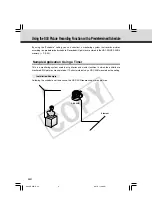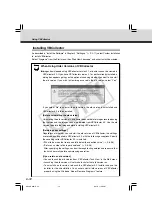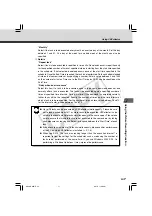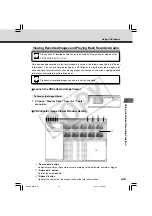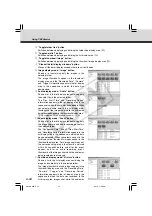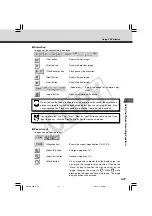
6-14
Using VBCollector
Note
●
Operate VBCollector with an authority greater than PowerUsers.
●
NTFS is recommended for such file systems containing the installation folder and
Data Directory.
●
When NTFS is used as the file system, set the permissions to allow reading and
writing to the installation folder and the Data Directory. Functionality is limited if
you do not have access privileges.
2. Enter each item in the various fields and click
the “OK” button.
q
Server Name
Assign a name for recognizing the Server (optional).
w
Data Directory
Enter the name of the folder in which downloaded
data is to be saved, or click the “Browse” button to
select a folder. Refer to the next page for information
on downloading data to a shared folder on the
network.
“Delete data on the server”
Ticking this checkbox deletes the downloaded data from the server.
e
Server Information
“Host Name” (
→
P.3-6)
Specify an IP address or a host name.
“HTTP Port” (
→
P.3-17)
Enter the HTTP port number set in the server.
“Administrator Account”
Enter an administrator account registered in the server (root).
“Administrator Password” (
→
P.3-5)
Enter the administrator password registered in the server (The default setting is VB-C50i).
“Settings Page URL”
Enter the “Path” to the setting title page set in the server (admin).
r
Proxy
“Use Proxy Server”
Select this if the connection is to be made via a proxy server.
“Host Name”
Specify the proxy server host name or IP address.
“Port”
Enter the proxy server port number. (The default value is 8080.)
q
w
e
r
Tip
Downloading data to a shared folder on the network
●
You cannot specify a path name that uses a network drive in the “Data Directory”
setting. Use UNC notation to specify the path name.
\\PC name\shared directory name[\path]
E.G.) \\Server\Share\path
006-VBC50i-E-US
06.7.6, 11:40 AM
14
CO
PY







